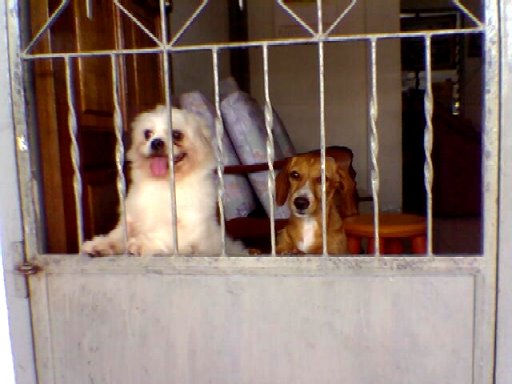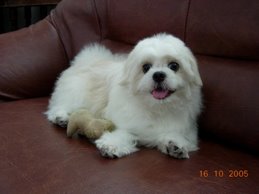Article From SubmitYOURArticle.com: Dog Training: The Basics
Making the decision to own a dog can be
difficult, however one thing most people look
over is the commitment needed to properly train
their new dog. Owning a dog requires more than
food and visits to the vet. It requires support
and efforts from all members in the family,
dedication, and consistency.
Having a happy dog, and home, is easy once you
know how to properly train your new dog. I hope
by sharing some of my own personal tips that you
can now feel confident in your decision to bring
home your new family member.
In the beginning trying to teach your dog even
the most basic commands can seem the most
frustrating time. However with persistence you
will find that things come easier to your dog and
the time it takes to train him shorter. By
starting training early, you develop a strong
bond with your dog, you will show him that YOU
are the leader, and he will be confident and
happy in knowing that you will take care of him
and give him proper instruction on how to behave.
Start out with simple tricks such as sit, stay
and down. Reward your dog often with lots of love
and praise and even a few of his favorite treats.
Crate training is a very important training
method that many people forgo. Crate training is
an important form of training for you and your
dog. It gives them a safe place to be when
nervous or excited. It provides a sort of comfort
and a sense of security for when you're not at
home. You start crate training by placing your
dog in the crate with the door open and letting
them get used to it, praise them each time they
enter on their own until they learn that the
crate is their home inside their home.
Potty training may be one of the hardest training
methods any owner undergoes. This is a full time
commitment and requires patience and diligence.
Watch for signs of restlessness and sniffing
around and immediately take your dog outside,
when your dog goes to the bathroom give them lots
of praise and say "potty" or "bathroom" as you do
so your dog can associate the two together. This
task is harder with puppies and a new puppy owner
must be 100 times more watchful as puppies don't
always give signs.
Constant barking and destructive chewing are two
behaviors that dog owners do not want to deal and
worry about. Barking can be annoying not only for
the owner but neighbors as well. Dogs bark to
communicate and learning why your dog is barking
is an important step to stop unwanted barking.
Chewing can be very destructive depending on what
your dog has sunk his teeth into. You have to
teach your dog what it is allowed and not allowed
to chew on and be consistent. Stop unwanted
chewing with a firm NO and replace the object
with something the dog is allowed to chew on.
Dogs chew when they are bored and teething so by
offering appropriate chew items and by
reprimanding unwanted chewing, and keeping your
dog active he will be less likely to chew on your
items and furniture.
Training is a full time commitment that requires
patience and dedication. However, by training
your dog correctly you will find that life as a
dog owner is fun and rewarding.
----------------------------------------------------
I have owned many dogs throughout the years, from
the feisty rebel to the serene quiet type. Over
the years I have learned numerous ways to train
dogs and provide not just myself, but people with
happy dogs and homes. If you want to find out
more about dog training and how to get started
training your dog, visit my site Online Dog
Obedience and get started with obedience training
for your dog.
EasyPublish this article: http://submityourarticle.com/articles/easypublish.php?art_id=122482














.jpg)






.jpg)

0 comments:
Post a Comment